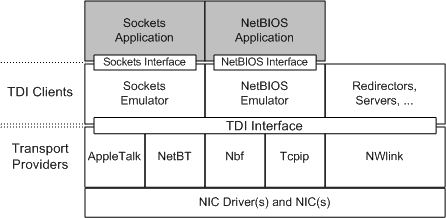The Transport Driver Interface (TDI) is a programming interface that was originally designed to offer a standardized method for connecting file system drivers with network transport protocols in Microsoft Windows environments. While initially developed for Windows NT and Windows 2000, the concept of TDI has been superseded in newer versions of Windows by more modern networking technologies like Windows Filtering Platform (WFP). Despite its diminishing use, understanding TDI can provide valuable insights into the historical evolution of networking technologies in Windows systems.
What is TDI?
Transport Driver Interface, often abbreviated as TDI, served as an abstraction layer that allowed a single file system driver to bind with multiple transport protocols such as TCP/IP, NetBIOS, and AppleTalk. Similarly, one protocol could work with multiple file systems. Essentially, TDI aimed to decouple the file system drivers from the network protocols, providing flexibility and easier management.

Transport Providers
Transport providers were implementations of network protocols that could be bound to file system drivers. This architecture was particularly useful for ensuring that different file systems and protocols could operate in harmony, without needing bespoke engineering to facilitate these interactions.
Transport Providers are implementations of network protocols such as TCP/IP, NetBIOS, and AppleTalk.
Purpose of TDI
The main advantage of TDI was its abstraction capabilities. By serving as an intermediate layer, it simplified the responsibilities of both TDI clients (like file system drivers) and transport protocols. This made the development and maintenance of network software more manageable.
Modern Alternatives
Today, newer technologies like Windows Filtering Platform (WFP) have taken over the role of TDI. WFP offers more extensive capabilities and supports the latest networking features, making it more aligned with contemporary networking needs. As a result, TDI is considered a legacy technology, but it’s essential to understand its role in shaping current networking architectures in Windows.
Conclusion
While TDI may no longer be at the forefront of network programming interfaces in Windows, its historical significance should not be underestimated. It provided an important stepping stone towards the more advanced, flexible networking solutions we see in modern Windows systems. By understanding TDI, one gains a richer perspective on the evolution of networking technologies.